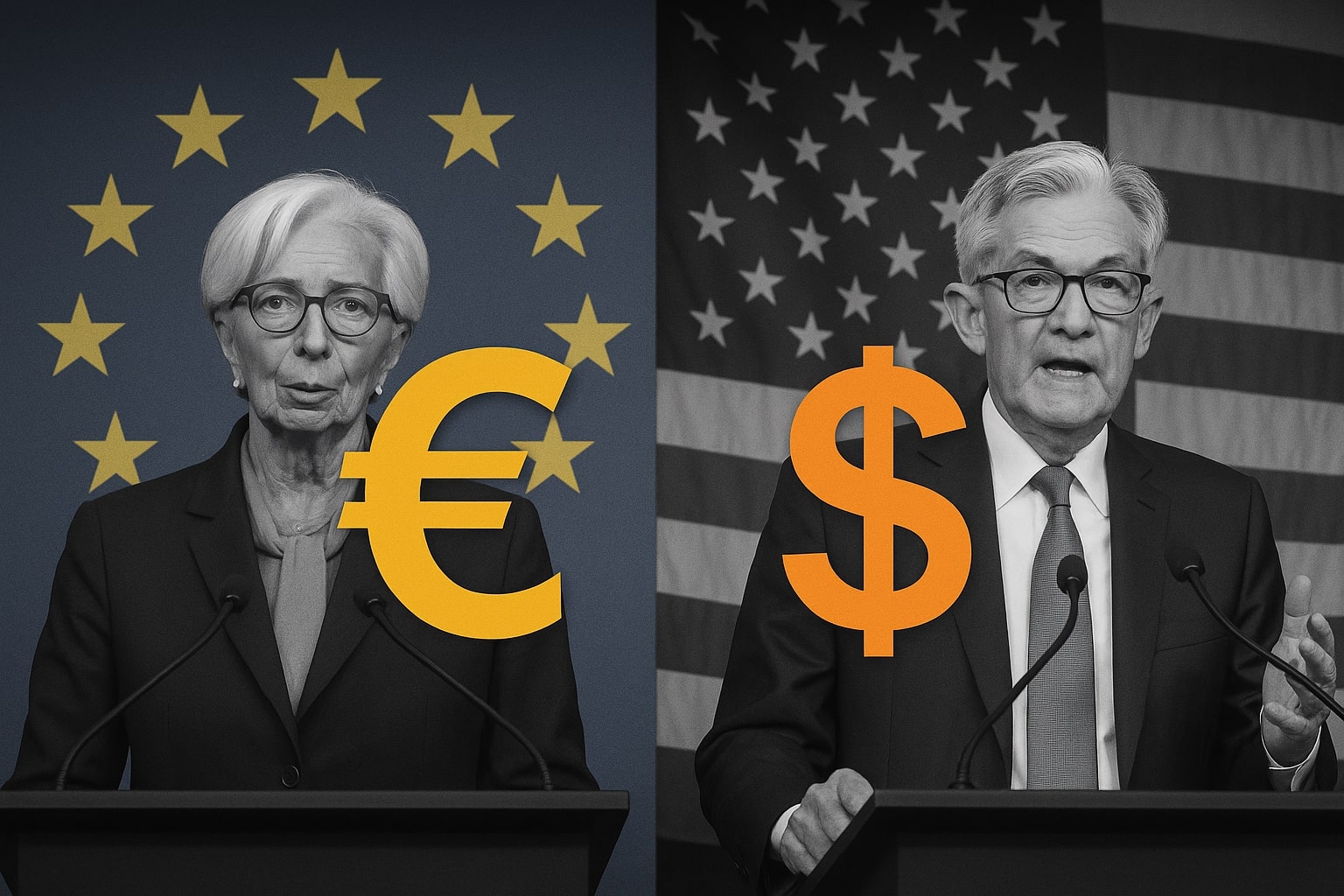EUR/USD: Bearish Momentum and Key Technical Levels to Watch in the Ongoing Downtrend
EUR/USD Faces Bearish Pressure After Breaking Key Support Levels
The EUR/USD currency pair has seen a continued bearish trend, with the price falling to around the 1.1100 zone after a sharp decline in Monday’s session. The short-term outlook remains predominantly negative as the pair continues to hover within the middle of its daily range. This suggests that while there is notable bearish pressure, a clear breakout signal is still absent. The market currently lacks decisive momentum, leaving traders in a cautious stance. The technical signals are somewhat mixed, with short-term indicators suggesting further downside, while longer-term signals offer potential support, complicating the current trading outlook.
Short-Term Indicators Suggest Further Downside in EUR/USD
Technically speaking, the EUR/USD pair is flashing a bearish signal, with indicators reinforcing the idea of downward pressure. The Relative Strength Index (RSI) remains in the 40s, pointing to neutral conditions without signaling immediate oversold conditions. However, the Moving Average Convergence Divergence (MACD) is producing a firm sell signal, confirming the ongoing downside momentum. Additionally, the Awesome Oscillator hovers around zero, indicating neutral momentum, while the Ultimate Oscillator remains in the 30s, reinforcing the bearish sentiment.
Short-term trend indicators are heavily tilted toward the downside. Both the 10-period Exponential Moving Average (EMA) and the 10-period Simple Moving Average (SMA) are positioned near the current price, sloping downward and confirming the immediate selling pressure. This short-term downward slope suggests a continued bearish momentum. However, the longer-term indicators tell a different story. The 100-day and 200-day SMAs are well below the current price levels, still sloping upward, providing a broader structural support that may act as a cushion for EUR/USD should the pair extend its decline.
Key Support and Resistance Levels in EUR/USD
Support for EUR/USD has been identified at crucial levels of 1.1082, 1.1073, and 1.0909. These levels are important in determining the continuation or reversal of the current downtrend. A sustained move below the immediate support zone could accelerate the bearish trend, pushing the pair towards even lower levels. On the flip side, resistance lies at 1.1192, 1.1202, and 1.1225. A break above these resistance levels would suggest that the market may be transitioning into a more neutral or bullish trend, challenging the prevailing bearish outlook.
In the near-term, the focus is on the immediate support at 1.1072 and the 1.1100 psychological level. A move below these levels would indicate that the selling pressure is intensifying, potentially leading to a test of the next support at 1.1000. A recovery above 1.1150, however, could bring the bearish outlook into question and suggest a potential rally towards the resistance zone above 1.1195.
Trade War Relief Boosts USD, Adds Pressure on EUR/USD
The U.S. Dollar (USD) saw a sharp surge as relief from the ongoing trade war between the U.S. and China boosted market sentiment. As both countries reached an agreement to roll back tariffs, the USD benefitted from increased risk appetite in the market. This dynamic led to the EUR/USD pair trading lower, with prices reaching 1.1072 during the European session before stabilizing around the 1.1100 mark.
The positive sentiment towards the USD was further fueled by the news of a significant reduction in tariffs on both sides. The U.S. agreed to lower tariffs on China from 145% to 30%, while China reduced tariffs on U.S. imports to 10%, down from 125%. This news injected optimism into global markets, lifting the USD and weighing on the EUR/USD currency pair. Traders are now focused on upcoming economic data releases, particularly the U.S. inflation data (CPI) set for release on Tuesday, which could further influence the pair's direction.
Key Short-Term Technical Outlook for EUR/USD
The daily chart for EUR/USD reflects the potential for further downside momentum. The pair has extended its slide, breaking below the 1.1150 level, which represents the 50% Fibonacci retracement level from the most recent bullish wave. This further confirms the dominance of the bearish correctional trend, which has been gaining traction in recent sessions.
In the short term, the 20-period Simple Moving Average (SMA) provides resistance at around 1.1150, and the pair remains below all of its moving averages, reinforcing the bearish outlook. The Relative Strength Index (RSI) continues to move lower, currently hovering around 23, indicating oversold conditions and adding to the bearish sentiment.
The 200-period SMA, which is currently at 1.1195, could act as a significant resistance point in case of any price recovery, and it will likely serve as the upper boundary for short-term price movements. On the downside, the critical support levels are located at 1.1070, 1.1025, and 1.0990, with a breach of these levels potentially accelerating the downward move.
Potential Impact of Upcoming U.S. Data and Market Sentiment
Looking ahead, market participants are closely watching the upcoming U.S. inflation data, which will be released on Tuesday. This data is expected to have a significant impact on the EUR/USD pair, as it will provide insights into the Federal Reserve's policy stance on inflation and interest rates. Any signs of rising inflation may bolster the U.S. Dollar further, contributing to additional bearish pressure on the EUR/USD pair.
In addition, the broader sentiment in the market remains crucial. The recent positive shift in risk sentiment, triggered by the easing of trade tensions between the U.S. and China, could continue to support the USD in the short term. If this sentiment persists, EUR/USD may struggle to find support at current levels, making it more likely that the pair will test the 1.1000 psychological level.
Conclusion: EUR/USD Bearish Bias and Key Levels to Watch
The technical outlook for EUR/USD remains firmly bearish, with the pair trading below critical support levels and underperforming against the backdrop of a stronger USD. Short-term indicators continue to point to further downside potential, although the longer-term structural support provided by the 100-day and 200-day SMAs suggests that a complete breakdown may take time. Investors should remain cautious and monitor key support levels at 1.1070, 1.1025, and 1.0990, while also watching for any shifts in market sentiment that could alter the current outlook. Given the current market conditions and the ongoing strength of the USD, the risk skews to the downside for EUR/USD, and the pair may well test lower levels in the coming sessions.




















